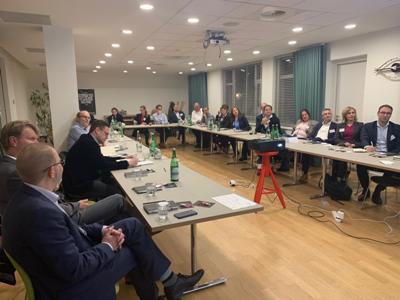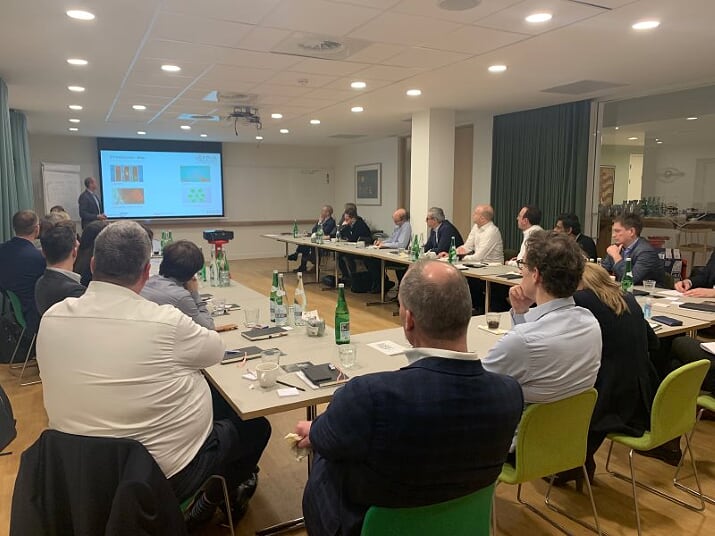 Anything ranging from the Bible to technological singularity, the greatest events of history and the future have all been told through stories. We are all storytellers in a sense but FP&A stories need particular skills to be great. In an era led by technology, data and automation, where do the stories fit? How will the FP&A stories of the future be told? What are the skills needed to be a great FP&A storyteller?
Anything ranging from the Bible to technological singularity, the greatest events of history and the future have all been told through stories. We are all storytellers in a sense but FP&A stories need particular skills to be great. In an era led by technology, data and automation, where do the stories fit? How will the FP&A stories of the future be told? What are the skills needed to be a great FP&A storyteller?
These questions were addressed during the FP&A Board meeting held in Amsterdam to discuss FP&A stories and storytelling. The forum was sponsored by SAP, Robert Half and IWG.
Over 30 professionals from leading organizations came together in the Spaces building and discussed the best practices of FP&A storytelling.
At the meeting, Simon Alexander, Managing Director of FP&A at FedEx Express, presented his experiences of creation and delivery of FP&A stories and the importance of adding value through stories. In addition, Lin Steendijk, Director of Finance at APJ, presented his experience with stories with the focus on data, indicators and visualization. There were also group discussions followed by the presentation of the findings by each group respectively.
What is FP&A Storytelling?
After people briefly introduced themselves, the definition and goal of storytelling in FP&A was discussed.
Some words that came to mind multiple times were:
- Impact
- Focus
- Influence
- Audience
- Simplicity
- Relevance
There are specific challenges regarding the storytelling in FP&A. First of all, finding great storytellers is relatively hard, deriving the story from the numbers or converting numbers to the story is also challenging in itself. It is a common misconception that the “numbers speak for themselves” as often multiple conclusions can be drawn from the same set of financial figures. Considering the different types of backgrounds and financial understanding, context is important, and executive summary is absolutely crucial to have.
A good FP&A story needs to have a goal, awareness/understanding and reach out to the audience’s heart and mind. Taking people’s emotions into account is especially important while delivering a “bad” message. In addition, messages sometimes get lost in translation and people might turn to politics.
Сase studies and the best practices from the field
The speaker, Simon Alexander, started with describing the importance of accuracy and speed in an organization that is in the business of fast delivery. He emphasized the importance of starting with the end goal in mind, “what is it that we want to achieve”. He also made a reality check of how adding value in the form of storytelling for FP&A is no longer a nice to have but a must have. This is mainly due to technological advancements such as Natural Language Generation, automated creation of stories from the available numbers. It was also mentioned that both visual and verbal communication have their place as part of the story which should exist to support, not confuse. Not using acronyms where possible was also practical since not everybody might be familiar or have different definitions for the same ones.
Simon summarized the essentials of FP&A storytelling based on his experiences with the following:
- Awareness of different levels of organization
- Awareness of recipients needs
- Translation of needs into story
- Communication of “not what they want but what they need”
- Less is more

The second guest speaker, Lin Steendijk focused on the “who” and “how” of storytelling. He pointed at data’s importance in terms of consistency, governance and source as all are critical for the information that forms the story. Lin pointed out the existing or developing trends add to the story and helps with the decision making as well. Lastly, the commitment from seniors is also needed to drive the story and its success. Focusing on indicators that drive value and not confusing the KPIs with KRIs are also helpful for the story.
Small Group Discussions on FP&A Storytelling
As the final event of the evening, the participants split into three groups to discuss the storytelling from angles of improvement, dashboards and best practices.
The first group touched on how FP&A professionals can be trained in storytelling. Getting people to understand the audience and their needs is the starting point for storytelling. In addition, preparation in advance in terms of material, structure, order all assist the story. Finally emphasizing a few main points to get across whether numerical or qualitative goes a long way. Analysis by itself does not make the whole story.
The second group was focused on design and implementation of FP&A dashboards. One of the first points that were brought up was the ownership of seniors or having a champion onboard. As part of the foundation, the data source also has to be agreed by all and linked correctly. Catering the dashboard for the whole business rather than only business unit and strategic orientation was also emphasized. Sometimes less is more as limiting the number of KPIs and leading indicators will provide a clearer picture. It was also established that much can be achieved for dashboards with already existing resources.
The third group discussed the characteristics of a great FP&A story. It was concluded that the story needs to be inclusive, tie to the business strategy and tailored to the desired outcome. Since it is still in the business context, it also needs to be providing a solution and action-oriented. It is also rather important to put figures into perspective through benchmarking or framing. It is important to be mindful of the audience and maintain a connection with it. The message also needs to instill feelings of inspiration, optimism and hope for the maximum impact. Nonverbal communication and body language still make a meaningful impact in the portrayal of the message from the eyes of the audience. Finally, a great FP&A story needs to be thought-provoking.
Alexander Gorodilov, Finance Director at VEON Wholesale Services B.V., shared his thoughts with us after the meeting. We had participants from different industries and, according to Alexander, it was very interesting to see how challenges were similar across different organizations and how they were addressed. Also, Alexander gave some recommendations on the best practices in FP&A storytelling such as stakeholder involvement, relevancy to the business and a clear understanding of how to achieve the business objectives.
Conclusion
Storytelling is gaining momentum as businesses become more data-centric and automated. Some professions within business such as Marketing and Investor Relations are already more advanced for storytelling relative to FP&A function. As a result, we can expect to see specialization and development on an individual and organizational level in the near future. There are many great stories to be told in finance and FP&A is just getting started.
Let us know if you have any examples from your organization on FP&A storytelling at contact@fpa-trends.com.





